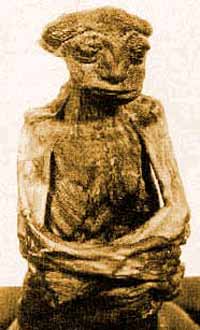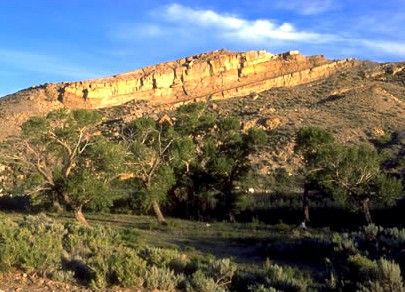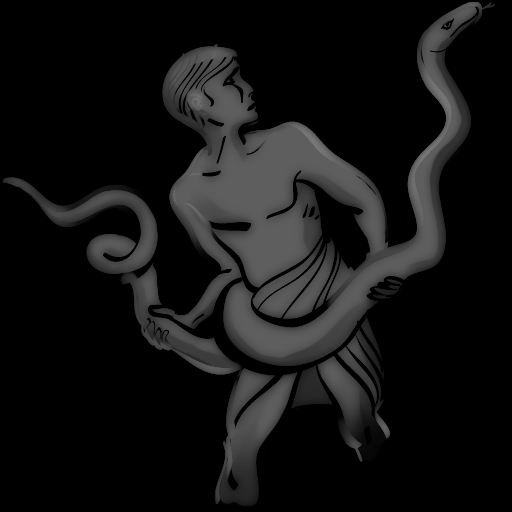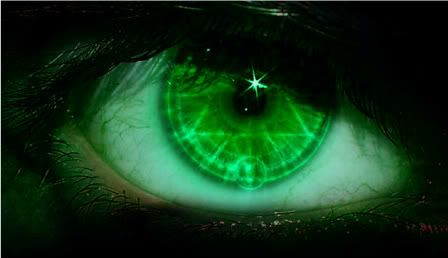Post by MoMo on Jun 9, 2012 22:18:51 GMT -6

[glow=red,2,300]PEDRO[/glow]
In October 1932, while digging for gold in the San Pedro mountains, Carbon County, Wyoming, two prospectors, Cecil Mayne and Frank Carr, blasted their way through some thick rock that a large vein of gold continued into. When the dust settled, they saw they had opened up a small room, approximately 4 ft tall, 4 ft wide, and about 15 ft deep. This is where they claimed that they first saw the mummy of a tiny person.
Pedro the mummy was found sitting in an upright position with his arms crossed, covering its crossed legs. It sat perpendicular to the floor on a small ledge in the room. It weighed approximately 12 ounces and was around 7 inches tall sitting, and 14 inches tall (estimated) standing. Its cranium was flattened, the eyes bulging and so well preserved that even the fingernails were visible. The head was covered in a dark, gelatinous substance, leading some to accuse Mayne and Carr of perpetrating a hoax using an infant from a medical collection, since some of the mummy appeared to have been preserved in liquid.
Upon its discovery, it was instantly called a hoax by most scholars. Many believed that it was a dummy or some type of Frankenstein taxidermy. Scientists came from all over the country to take a look at the remains. X-rays were performed on the mummy in 1950 and it was discovered that there was a "manlike" skeleton inside, almost fully formed. Some of the bones were broken, including the spine, collarbone and skull. These injuries and congealed blood at the top of the skull insinuated a violent death.

Dr. Henry Shapiro's Findings and Counter Argument
In 1950, the mummy was examined by Dr. Henry Shapiro, a biological anthropologist from the American Museum of Natural History. After examining the x-rays, Dr. Shapiro believed that this mummy was the body of an approximately 65 year old man at the time of his death. Also, this mummy had particularly large canines in comparison with the rest of his body size, almost vampire-like. These findings were substantiated by Harvard University and their anthropology department. However, 30 years later, Dr. George Gill, a forensic anthropologist proposed another theory after looking at the x-ray. He thought that the body could have been an infant of some unknown tribe of Indians. Mummies in Wyoming are not unusual since its arid climate is conducive to preserving tissue, however tiny mummies are a rarity. A second, similar mummy was found in roughly the same area and brought to the attention of Dr. Gill after he appeared on a television show called Unsolved Mysteries. After the discovery of the second, this time a female mummy, he could x-ray her and look at her in great detail. She was only 4 inches high, and in a slumped position. Dr. Gill determined that she was an infant and hypothesized that she was either a prematurely born baby, or possibly a child with anencephaly. After his testing the family that owned the girl mummy took her back and was never heard from again. Gill suggested that both mummies were the result of malnutrition of babies born to a tribe (possibly even immigrants) still adapting to the harsh conditions of the area, about three centuries ago. One problem that arises with trying to date the mummy without it being present is that it was sealed tightly in a cave with thick rock, which could take thousands of years if done by natural processes, or it could have been placed there and sealed at a later date. Thus without the bodies, determining age is improbable.
Little People of Wyoming
Also called the Nimerigar, Native American legends, mainly the Shoshone tribe, speak of an aggressive race of "little people" which ranged in height from around 20 inches to 3 1/2 feet tall. According to Native American lore they lived in the San Pedro Mountains in south central Wyoming and fought constantly with the average sized humans of the area using poisoned arrows. It was often said that if one of the Nimerigar became sick or old, they were killed by their own people with a blow to the head. It was also said that the little mummies brought bad luck to anyone who found them, and to this day Native Americans warn people of the tribe of "tiny people eaters" that roam the San Pedro Mountain Range of Wyoming. Most of these claims were considered folklore until the discovery of what is now known as "Pedro" the mummy.

Comparisons with Other "Little People" in Native American Folklore
Other alleged discoveries, like that of the 1876 discovery of a "pygmy" graveyard in Coffee County, Tennessee, has some people saying that a race of pygmy people ranged all over the United states, and they often use Pedro the mummy as the proof. A man plowing his field supposedly found graves that were 2 feet long, 14 inches wide, and 18 inches deep. Other explanations have been offered for the burials, that they were of children or disarticulated people. The Cherokee had a legend of little people who lived in mountains, came up to an average sized persons knee and were quite nice unless you disturbed their homes. There are many Native American stories about little people.
The Disappearance of the Mummy
The mummy ended up in Meeteetse, Wyoming, at a local drug store where it was shown as an attraction for several years before it was bought by Ivan T. Goodman, a Casper, Wyoming businessman. A July 7, 1979, article in the Casper Star-Tribune stated that Goodman died in 1950 and the mummy was passed on to Leonard Wadler, a New York businessman. The mummy has not been seen in public since Wadler, who died in the 1980s, took possession of it. The mummy’s whereabouts are currently unknown. Until the mummy shows up again, it will be impossible to know if the mummy is real. If it is, the primary focus will be on finding the age and nationality of the mummy. There is currently a $10,000 reward for the person who finds the missing mummy according to Trib.com.








